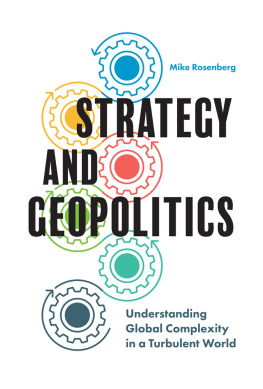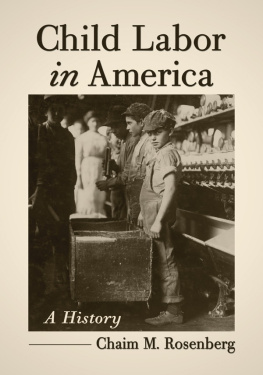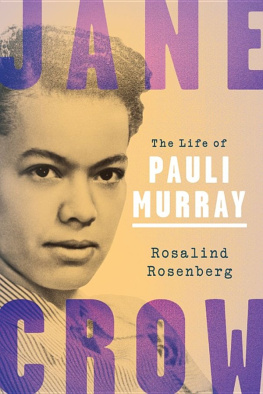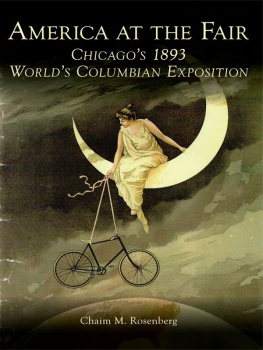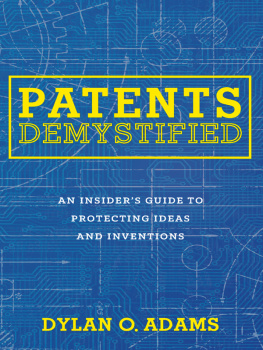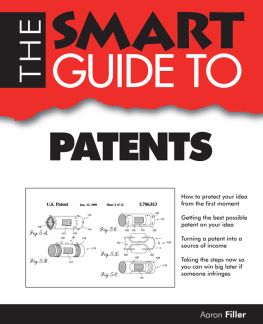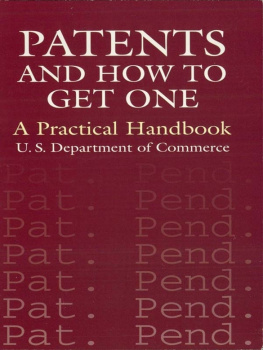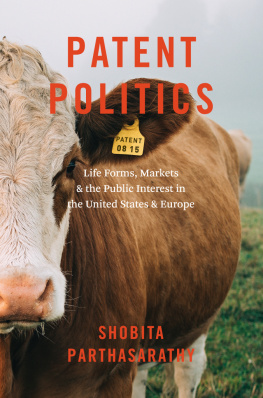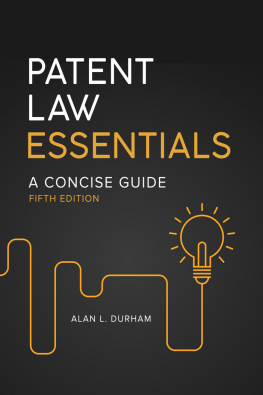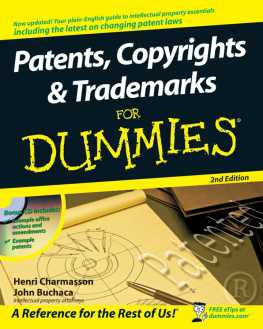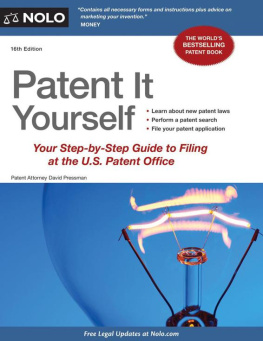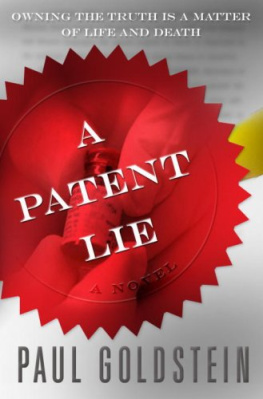Patent Application Drafting
2016 Edition
Morgan D. Rosenberg
QUESTIONS ABOUT THIS PUBLICATION?
For questions about the Editorial Content appearing in these volumes or reprint permission, please call:
Deneil C. Targowski
Legal Editor
Email... Deneil.C.Targowski@lexisnexis.com
Phone... (908) 673-3380
For assistance with replacement pages, shipments, billing or other customer service matters, please call:
Customer Services Department at
...(800) 833-9844
Outside the United States and Canada, please call
...(518) 487-3000
Fax Number
...(518) 487-3584
Customer Service Web site
...http://www.lexisnexis.com/custserv/
For information on other Matthew Bender publications, please call
Your account manager or
...(800) 223-1940
Outside the United States and Canada, please call
...(518) 487-3000
ISBN: 978-1-5221-0071-3 (eBook)
ISSN: 2329-1419 (Print)
ISSN: 2329-1427 (Online)
Cite this publication as:
Patent Application Drafting [sec. no.] (Matthew Bender, Rev. Ed.)
Example:
Patent Application Drafting 1.01 (Matthew Bender, Rev. Ed.)
Because the section you are citing may be revised in a later release, you may wish to photocopy or print out the section for convenient future reference.
This publication is designed to provide authoritative information in regard to the subject matter covered. It is sold with the understanding that the publisher is not engaged in rendering legal, accounting, or other professional services. If legal advice or other expert assistance is required, the services of a competent professional should be sought.
LexisNexis and the Knowledge Burst logo are registered trademarks of Reed Elsevier Properties Inc., used under license. Matthew Bender and the Matthew Bender Flame Design are registered trademarks of Matthew Bender Properties Inc.
Copyright 2016 Matthew Bender & Company, Inc., a member of LexisNexis.
All Rights Reserved.
No copyright is claimed by LexisNexis or Matthew Bender & Company, Inc., in the text of statutes, regulations, and excerpts from court opinions quoted within this work. Permission to copy material may be licensed for a fee from the Copyright Clearance Center, 222 Rosewood Drive, Danvers, Mass. 01923, telephone (978) 750-8400.
Editorial Offices
630 Central Ave., New Providence, NJ 07974 (908) 464-6800
201 Mission St., San Francisco, CA 94105-1831 (415) 908-3200
www.lexisnexis.com
Terms of Use
Your use of this electronic publication (eBook) from LexisNexis, a division of Reed Elsevier Inc., a Massachusetts corporation, is subject to the following terms and conditions. This eBook is for your personal use only. All access to and use of this eBook is subject to U.S. and international copyright law. All intellectual property rights are reserved to the copyright holder. Redistribution or duplication of this eBook to any other electronic media or a third party is strictly prohibited. Under no circumstances may you redistribute this eBook commercially or post this eBook on an intranet, internet or SharePoint site. Finally, use of this eBook is further subject to the terms and conditions of use which were accepted at the time you completed your purchase of this eBook from the point of purchase.
Hyperlink Key
In order to distinguish between the links to other sections within LexisNexis eBooks and external links to the Internet, we have added color coding to the links.
Following is a color key for the links:
Blue: Links inside the eBook
Green: External links to LexisNexison-line and the Internet
Note that the information provided herein is general information, which is provided as reference and educational material and does not constitute legal advice or legal opinion.
Dedicated to Paul McKenna, who unknowingly got me writing again, and to Molly, my intellectual and academic muse.
Richard J. Apley
Former Director of the Office of Independent Inventor Programs United States Patent and Trademark Office
I served as a Patent Examiner at the U.S. Patent and Trademark Office (USPTO), in various art units (i.e., the USPTOs subdivisions for different technology areas) and in various positions, for over thirty years. As a Patent Examiner in the field of exercise devices and machines, I had the pleasure of conducting many interviews with Morgan Rosenbergs father, Mort Rosenberg. Mort Rosenberg and I were both of the old school, he from the patent attorney standpoint and me from the Patent Examiner standpoint, but we both appreciated the elegance and subtlety that went into patent practice.
Back in those days, shortly after the invention of the wheel, smoking was still allowed in public buildings. Not in the Patent Office, because of all of the literal stacks of patents (the vast rooms where patent searching took place were called the stacks), but it was certainly not uncommon to see smoking taking place indoors (and even on airplanes, if you newly minted patent practitioners can believe it). Even if Morts reputation as a patent attorney extraordinaire wasnt known, everyone at the USPTO always knew him on sight. Why? Because he always had an unlit cigar in his mouth. Always unlit, from start to finish, first he would suck on a plastic wrapped cigar, then he would take off the wrapper and suck on the cigar itself, and finally it would become a soggy, disgusting mess and he would chew on the thing. I never saw him spit out a piece of soggy tobacco, thus making me always wonder if he actually ate the damn things. Ill have to ask Morgan about that.
Regardless of this unusual habit, Mort was a top-notch patent attorney and I enjoyed our interviews very much. Both before and after the business at hand, we often chatted about various things, particularly matters at the USPTO. One thing we almost always discussed was how quality seemed to be slipping. Every generation has a back in my day, things were much better general opinion, but the quality of actions being issued by the USPTO (not in my art units, of course) was starting to slide, and the quality of responses I began to see from attorneys was also starting to degrade. We used to sit and hypothesize about why the quality on both ends was decreasing: was it the exponential increase in new patent applications every year, was it fallout from the antiestablishment movement of the previous decade, was it something in the water that was dumbing us all down? We eventually arrived at a satisfactory answer: we had mentors. Mentorship is, unfortunately, an educational technique that now belongs to a bygone era.
Now, two decades later, the mentors have all retired, work from home, or are otherwise inaccessible. We live in a world of high efficiency and multitasking and slow, methodical teaching methods are now viewed as somehow a bad thing. Im now on the side of private patent practice, and this is readily apparent, with the quality of office actions being at an all-time low. Its a rare week when I dont see an office action come from the USPTO that doesnt have glaring mistakes all through it. The logic behind the rejections is sometimes impossible to decipher, the misapplication of well-established law is common, and the technical know-how of the Examiners is often questionable. Truly, this never would have happened in my day.


